

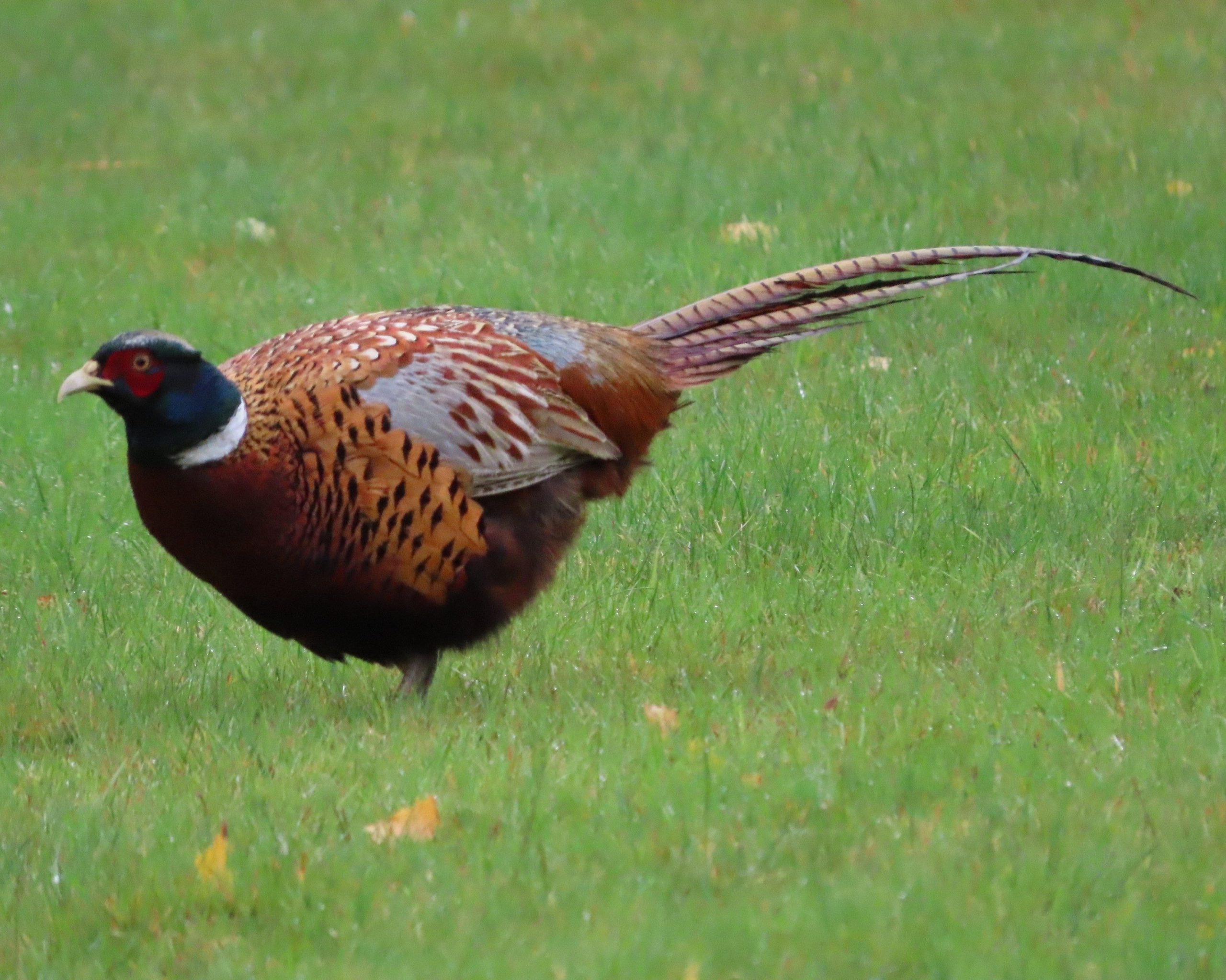
Hunting Experiences
31 July 2023
Poronui guests awaken most days of their visit to the sounds and sight of numerous ring-neck pheasants strutting around the lodge like they own the place. Poronui provides the perfect habitat for this stunning upland gamebird species. The males are eye-catching with an iridescent copper plumage, a white neck collar, greenish/purple head feathers, bright red patches around their eyes and long tail feathers. The female hens are drab in comparison but this camouflage allows them to sit on eggs or young undetected.
Since the first release in 2022 the birds have spread out in all directions and quickly become acclimatised to the environment. To pay their way hunting occurs annually in autumn within the Upland Game Preserve areas but there will always be plenty of birds roaming around the accommodation environs to brighten up everyone’s day with their shimmering coloration and comical antics. They are very territorial and the feisty males assert this dominance trait at every opportunity. One determined bird this year set up his territory on the helicopter pad and departing and arriving machines were attacked; another bird chases the Lodge groundskeeper every time he sees him while others confront vehicles and cyclists.
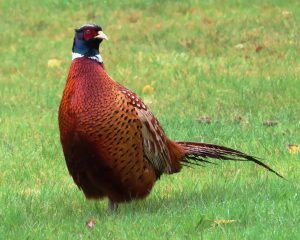
The ring-neck pheasant is the pheasant species that upland gamebird hunters in New Zealand are familiar with on both main islands. The species has historically done best in the warmer North Island and while working in Taranaki years ago I encountered several local birds amongst the sand dunes near the coast. Hunted birds hold tight in cover and a good dog is needed to flush them upwards. I photographed a hen bird on Poronui that flushed inches in front of a lunging spaniel. That takes nerves. The bird escaped unscathed.
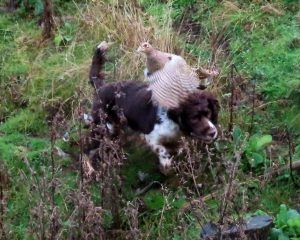
The ring-necked pheasants on Poronui were bred by New Zealand Gamebirds Ltd. The malesare the classical looking chestnut birds with the white collars, but amongst the released birds are some melanistic and white variations. They have a mixed ancestry that can be traced back to China and other parts of Asia. This genetic blending is surprisingly similar to the sika that grazes the property alongside them. The majority of the birds grow quickly and though young the cock birds have exceptionally long tail feathers just a few months after release.
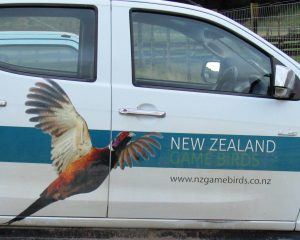
Their main pheasant predators on Poronui are hawks, falcons, and mustelids such as ferrets and stoats. On my Poronui visit I was watching a cock pheasant looking for grubs in the ground when a brown blur attacked him from a hedge. The bird reared back and the blur disappeared into cover. The pheasant walked away and then the attacker appeared again. It was a stoat sizing him up for another attack. Luckily for the pheasant he had wings and flew up into a tree. Poronui has an extensive predator control system in operation so such predator sightings are rare.
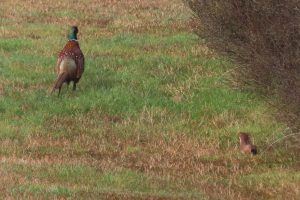
Pheasants like to see what is going on in their patch so will often be found standing on a gate or fence or high in a tree. They would rather flee on foot than take to the air but will fly short distances when an approaching human, gundog or predator gets too close. Strong chest muscles and rounded wings allow birds to explode into the air at speed usually cackling as they clear cover. The ring-necked pheasant is admired around the upland gamebird world and in the USA it is the state bird of South Dakota even though it is not native to the area. It is a ‘special’ gamebird.
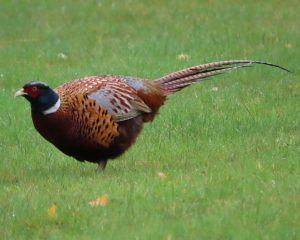
Want to ask a question about Poronui, personalise your vacation with bespoke itinerary options or find out about available dates?
Simply fill in your name and contact email address with a short message and we will get back to you.